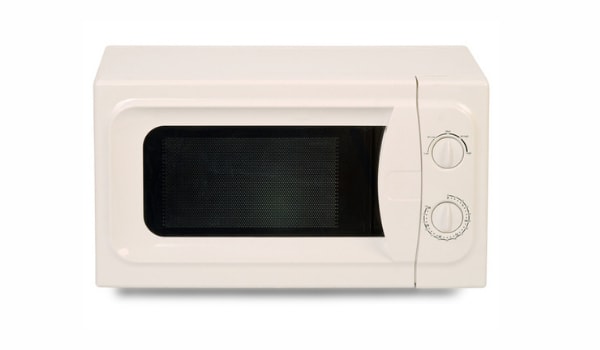Container gardening always looks fascinating. And if the container is made of ceramic, it makes your garden look more aesthetic. But your favorite ceramic pot may not always come with drainage holes. So, can you drill drainage holes in ceramic pots?
You can drill drainage holes in ceramic pots. But to do that, you need a drill with a suitable drill bit, such as masonry bits. Then turn the ceramic pot upside down and mark the spot you want to drill. Finally, turn on the drill machine slowly, and speed it up until you get the desired hole size.
The best way to keep the plants healthy is to let the roots breathe. So the best way to ensure it is to use pots with drainage holes. Without drainage holes, water gets clogged and damages the plants.

Quick Navigation
Can You Drill A Hole In A Glazed Ceramic Pot?
Though unglazed ceramics pots are commonly chosen for plating plants, glazed ceramics often take part in it as well. These ceramics contain colorful glaze that appears shiny. It enhances the garden’s look and makes it appear more luxurious.
But can you drill drainage holes in ceramic pots that are glazed?
The answer is yes, you can.
Making holes in glazed ceramic pots is possible. But the challenging part is holding the pot or keeping it in its place as the glaze makes it slippery. However, it is not an impossible task and requires only a few things.
The only thing that changes here is the drill bits. You will need to use glass or tile drill bits to make holes in glazed ceramic pots. The masonry drill bit that people usually use on unglazed ceramics may not work here because you will have to apply more pressure, damaging the entire pot.
Be sure to use painter’s tape over the spot you want to drill. As said, glazed ceramics are very slippery. Using masking tape will help you hold the drill on a fixed spot without slipping and damaging other areas. It would be best to use three to four layers of tape on the marked spot.
You can start drilling with smaller drill bits and then move to larger sizes to enlarge the hole. Starting with a ⅛ inch drill bit would give you a better result.
And don’t forget to start at a slow speed and increase the speed gradually. Starting with a high speed can leave cracks in the ceramic pot or break it.
You can use water as a lubricant for additional working ease and more efficient drilling. It also prevents the ceramic from overheating.
How To Drill A Drainage Hole In A Ceramic Pot?
Now, this ceramic pot you want to use could belong to your home or be brand new. But you want to drill it in the right way. Recently, I’ve taken the courage to try this myself, and I was pretty satisfied with the result. And I believe my step-by-step guide will help you understand everything about drilling drainage holes in ceramic pots.
Thing You Will Need
- Ceramic pot
- Drill
- Drill bits
- Marker
- Painter’s tape/masking tape
- Wet rag
- Safety glasses/mask (optional)
Step 1: Get The Right Tools
Your first task should always be gathering all the necessary tools. It will be frustrating if you cannot find everything after setting up the workplace.
Drilling holes in ceramic pots do not require many tools. The essential ones are a drill and the right drill bits. So those should be your main concern. You can use various drill bits. But it is best to go with a masonry bit.
Step 2: Set Up Work Area And Safety
You need a proper setup for drilling the ceramic pots. Ceramics are made of clay and create dust as you drill them. So you need to select an area to work in and cover it with some newspapers.
It is better to choose a well-ventilated place when drilling ceramics. Make sure the pot does not have any crack, or it will break when drilling.
Talking about dust, let’s not forget about the safety of your respiratory system. If you are working on multiple pots, it means you will have to deal with more dust. It is best to wear a safety mask and glasses to prevent hazards.
Step 3: Soak The Ceramic Pot
Lubricating ceramic pots before drilling them gives you plenty of advantages. First, it creates less dust and fumes. Secondly, it prevents the ceramic from becoming warm.
You can soak the entire pot in a bucket of water for an hour before drilling it. But leaving it for 24 hours beforehand will give you the best result. Make sure to remove it sometime before drilling and remove any puddle left on the drilling area.
Step 4: Choose Drill Bits
Masonry drill bits are made to pierce through clay, ceramics, stone, concrete, etc. That’s why I chose this drill bit to make holes in my ceramic pots.
You can use these bits on any regular power drill. The design helps to drill on various objects without putting too much pressure at one go and breaking them.
Remember that drill bits come in various sizes, and they help you make holes of various sizes. Since I was making a hole to drain water, I needed a ½ inch hole on the ceramic pot.
Now, here is a trick to achieve the right hole size. It is best to choose smaller drill bits and move to larger ones gradually. I started with a ⅛ inch masonry drill bit, then replaced it with a ¼ inch one before picking the ½ inch bit.
Step 5: Mark The Spot
How many holes do you intend to make in your ceramic pot? I had two ceramic pots of small to large sizes. I needed to make one hole in the small pot and multiple holes in the large pot. So let’s talk about both.
Turn your ceramic pot upside down on the laid newspaper first. If you are making multiple holes, you can use a marker to mark the spots you want to drill.
I had to make one ½ inch hole in the small pot. So I marked the area with painter’s tape. You can put one or two layers of painter’s tape or masking tape in a crossing position to find the center of the pot. Besides, using multiple layers also comes in handy to get a better drilling grip.
Step 6: Start Drilling Slowly
Place the drill on the marked area steadily and turn it on. I would suggest starting at a slow speed. Masonry drill bits can put pressure on ceramics. So starting with a full speed can damage the ceramic.
So you can work with a slow speed at first and turn it faster gradually. It will prevent going through any unexpected issues. Do not put any extra pressure on the ceramic with the drill. Let the drill bit work at its own speed and work its way through the ceramic.
Make sure to clean the dust before continuing again. Besides, taking small breaks helps the ceramic stay cool. And as I have mentioned in step 4, change the drill bits size gradually until you achieve your desired hole sizes.
Step 7: Clean Up The Pots
Once you are done drilling all the holes, turn off the drill and keep it away. Then use a wet rag to clean the pots inside out so that there is no dust or debris left.
Check the pots carefully to ensure the drilling did not leave any cracks or chip marks. Finally, your ceramic pots with drainage holes are ready for use.
Additional Precaution Tips
You can see that there are no hard and fast rules for drilling drainage holes in ceramic pots. But you can follow a few precaution tips or hacks to improve the outcome.
- Choosing the right drill is essential. Do not use a hammer drill if you are working on ceramics. My best bet would be on cordless drills or battery-powered drills. They are easy to use, and the cords will not come in the way.
- You can wear safety gloves if you are a first-timer. Wearing safety glasses and a mask will prevent dust or flying particles from causing harm.
- Do not put any excessive pressure on the drill. Hold it straight on the back of the pot and add light pressure after turning on the drill.
- Take your time when drilling drainage holes on ceramic pots. Start at a slow speed and increase it gradually.
What Type Of Drill Bit To Use For Ceramic Pots?
The type of drill bit you use on ceramic depends on what type of ceramic it is. The drill bit can be different depending on whether you use it on glazed or unglazed ceramics.
If you want to drill drainage holes in unglazed ceramics, masonry drill bits are the best. However, these drill bits will require a little pressure to make them work more effectively.
But if you have glazed ceramics, you will need glass and tile drill bits for the best result. Such drill bits have the right sharpness to make excellent drainage holes in ceramic pots.
And then there are the diamond-tipped drill bits. They are very good at distributing even pressure everywhere when you drill on ceramic items. So the type of drill bit you use on ceramic will vary based on what ceramic you use.
Best Drill Bit For Ceramic Pots
Since we are talking about drill bits for ceramic, let’s be a bit more specific. Which drill bits work best on ceramic pots? I went ahead and reviewed three such drill bits. And I hope you will find the reviews helpful.
DKIBBITH 10-Piece Masonry Drill Bits Set
Well, I’ve talked about masonry drill bits a few times already. Such drill bits make drilling drainage holes in ceramic easier. That’s why I checked out this DKIBBITH 10-Piece Masonry Drill Bits Set.
Now, what type of drills will they fit? You can use them on charging drills, hand and bench drills. This set has ten 1/8, 5/32, 3/16, 1/4, 5/16, 3/8, and 1/2 inch drill bits. So if you want to enlarge the drainage holes gradually, these drill bits will be very useful.
The drill bits have high-quality tungsten steel alloy heads. They provide more precision in work, and the Y-type slot design keeps debris at bay.
BOSCH GT2000 4-Piece Drill Bit Set
The BOSCH GT2000 drill bits are suitable for precise work. It is a 4-piece set at a low price. So if you are not looking for a lot of options for drilling holes in your ceramic pot, you can purchase this drill bit set.
Each tip has diamond ground cut along the edges to ensure zero interruption when the bit pierce through the ceramic pots. Besides, the reinforced tips will prevent the ceramic from getting chipped.
The size of the drill bits is 1/4, 1/8, 3/16, and 5/16 inches. You may have to work a bit more if you want a different drainage hole size. The flat shanks make sure the bit tips don’t slip when drilling.
NEIKO 00823A 5-Piece Diamond Drill Bit Set
The Neiko 00823A 5-Piece Diamond Drill Bit Set is not only about looks. They are sharp, ensure precise cutting and come at different sizes to make sure your drilling task becomes more flexible.
All of them have diamond dust and nickel coating on the tip. The sharpness they create easily pierce through ceramics and various other materials, such as glass and tiles. The sizes you will be getting in this set are 1/2, 3/8, 5/16, 1/4, 5/32 inches.
Another perk of this diamond grit design is that you don’t have to do a lot of dusting after each use. The drill bits will leave a smooth finish with each use.
Frequently Asked Questions
Q. What Size Drainage Holes In Pots?
Your ceramic planter should have at least one or two holes depending on how porous and big or small it is. And each hole should measure 0.5 to 1 inch.
You can use a masonry drill bit in an electric drill to do the job. Be careful about drilling more holes because ceramics are hard yet can crack due to drilling pressure.
Q. Is One Drainage Hole Enough For Ceramic Pot?
The drainage hole number depends on the size of the pot. It also depends on how porous the ceramic is. If it is a large pot, it will need multiple holes to drain all the water.
However, if the pot is small, there should be at least two holes in the ceramic pots. And one hole is enough for ceramic pots with high water-absorbent ability.
Final Words
Now, can you drill drainage holes in ceramic pots? I bet you can because the task is pretty simple. You can make planting pots with both old ceramic containers or new pots. So if they do not have any drainage holes, you can get your electric drill to do some handy work.
Depending on how many you are making, it takes half a minute to a few minutes to make drainage holes. So you do not need a lot of preparation beforehand. Just get your tools and make the ceramic pot ready to have some plants in it.



Aw, this was an incredibly good post. Taking the time and actual effort to produce a superb article… but what can I say… I procrastinate a whole lot and don’t seem to get nearly anything done.